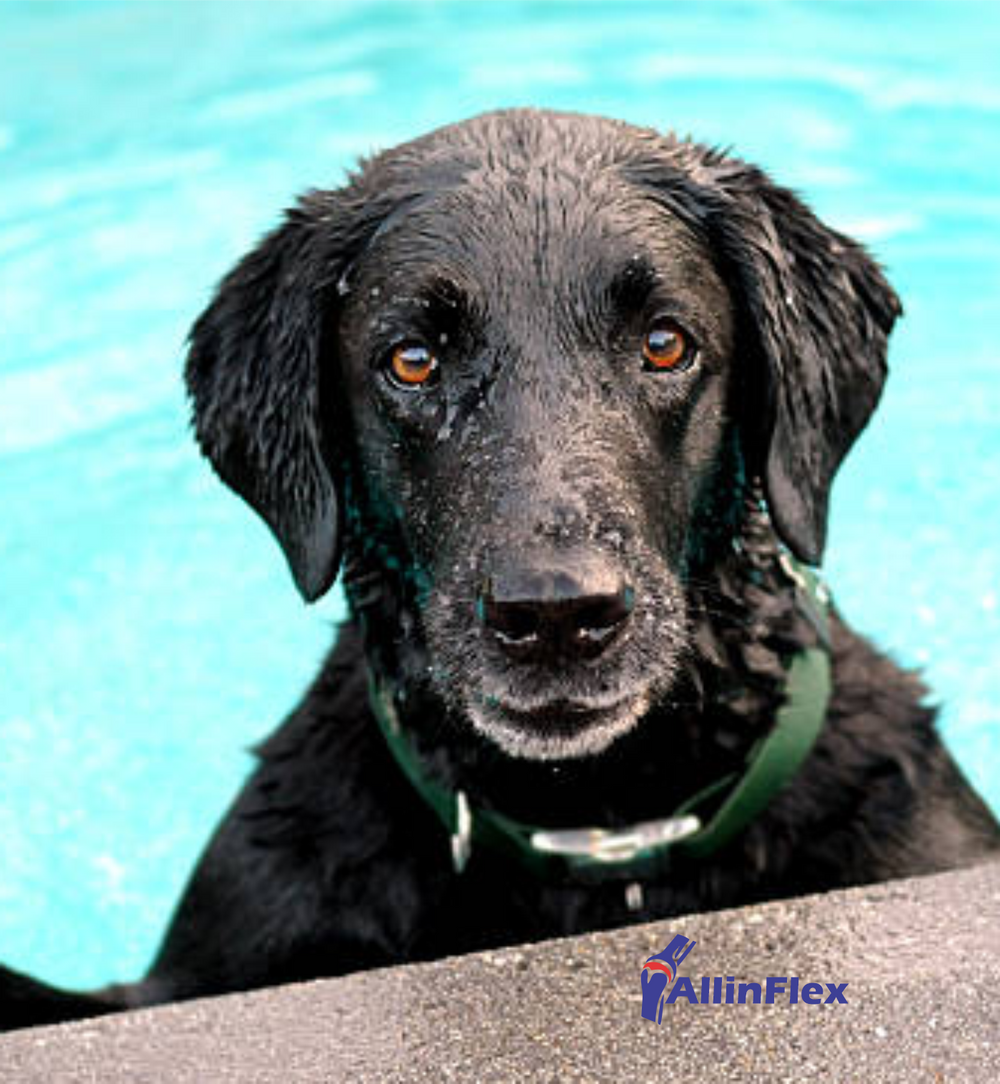Exercise Regimens for Dogs with Arthritis
Saskia OstermeierUnderstanding the Importance of Exercise for Dogs with Arthritis.
Exercise plays a crucial role in the life of any dog, but it's even more significant for dogs with arthritis. Regular, gentle exercise helps maintain a dog's joint mobility, preventing stiffness and reducing discomfort.
Additionally, it assists in maintaining a healthy weight, reducing the stress on the joints caused by excess weight, a key factor in managing arthritis.
Exercise also offers mental stimulation, providing a diversion from the chronic pain and helping to ward off the emotional distress that may accompany the physical discomfort of arthritis.
Just like in humans, physical activity can significantly improve a dog's overall mood and outlook, leading to an enhanced quality of life.
However, while exercise is essential, it's crucial to remember that not all forms of physical activity are suitable for a dog with arthritis.
The aim should be to provide gentle, low-impact exercise that does not exacerbate the joint inflammation and pain. Understanding this balance is the first step in managing your dog's arthritis through exercise.
Finding the Balance: Moderate Exercise for Dogs with Arthritis
Striking the right balance between providing enough exercise and not overstraining the joints is essential when managing arthritis in dogs. Too little exercise can lead to joint stiffness and muscle atrophy, while too much can exacerbate the arthritis symptoms and result in pain and discomfort.
The key lies in finding moderate, low-impact exercises that can help your dog maintain joint flexibility and muscle strength without causing harm.
Moderate exercise involves activities that are gentle on the joints and can be adjusted according to your dog's ability and comfort level.

The duration, intensity, and frequency of these exercises should be tailored to your dog's individual needs, taking into account their age, breed, weight, and the severity of their arthritis.
It's also important to monitor your dog's response to the exercise regimen. Dogs are good at hiding their pain, so look out for subtle signs like limping, difficulty getting up, or a decreased interest in physical activities.
If you notice these signs, it may be necessary to adjust the exercise regimen accordingly.
Incorporating moderate exercise into your dog's routine can greatly enhance their quality of life, providing the physical stimulation they need while protecting their sensitive joints.
Best Types of Exercise for Dogs with Arthritis
Not all exercises are created equal, especially when it comes to dogs with arthritis. The goal is to find activities that promote mobility and strength without putting too much strain on the joints.
Here are some of the best types of exercise for dogs suffering from arthritis:
- Swimming: Often regarded as the perfect exercise for dogs with arthritis, swimming is a non-weight-bearing activity that allows dogs to move their joints without the stress of impact. It provides a full-body workout, strengthening the muscles that support the joints without worsening arthritis symptoms.
- Walking: A gentle walk can be incredibly beneficial for dogs with arthritis. However, the walk's pace and duration should be adjusted based on your dog's comfort level. Opt for multiple short walks instead of one long one to avoid overexertion.
- Physical Therapy Exercises: Certain exercises, often guided by a canine physical therapist, can help strengthen the muscles around the joints, improving stability and reducing pain. These may include balance exercises, gentle stretches, and range-of-motion exercises.
Always remember to start slowly and gradually increase the duration and intensity of the exercise as your dog builds stamina and strength.
The key is to observe your dog's reaction to each activity and adjust accordingly, ensuring they are comfortable and enjoying their workout.
This table represents a basic weekly exercise plan, but it's essential to note that individual plans may vary based on the dog's current condition, tolerance, and vet's recommendations.
| Day | Exercise |
|---|---|
| Monday | 15 minutes of gentle walking |
| Tuesday | Physical therapy exercises under guidance |
| Wednesday | 15 minutes of gentle walking |
| Thursday | Rest day |
| Friday | 10 minutes of swimming (if possible) |
| Saturday | Physical therapy exercises under guidance |
| Sunday | Rest day |
This is just an illustrative example and should be adapted to the needs of the specific dog.
| Consideration | Guidance |
|---|---|
| Consider your dog's current state | Assess your dog's current physical condition. Their age, breed, severity of arthritis, and overall health will all influence what kind of exercise is best for them. For instance, older dogs may require shorter, more frequent sessions of low-impact exercise. |
| Start slowly | Always start with light exercises and slowly increase the intensity and duration as your dog's strength and stamina improve. Remember, the goal is not to push your dog to their limit but to promote healthy movement and flexibility. |
| Mix it up | Variety is key to keeping your dog engaged and motivated. A mix of walking, swimming, and physical therapy exercises can provide a comprehensive workout for your dog without causing boredom or burnout. |
| Monitor your dog | Keep a close eye on your dog during and after exercise. Look out for signs of fatigue, discomfort, or disinterest, which might indicate that the exercise regimen needs adjustment. |

Overcoming Challenges: When Your Dog Doesn’t Want to Exercise
Even with a well-thought-out exercise plan, you may face challenges in getting your dog to engage in physical activity. Dogs with arthritis often experience discomfort that may deter them from wanting to exercise.
However, there are strategies that you can implement to encourage them.
- Create a positive association: Make exercise time fun and rewarding for your dog. You could use their favorite toys during playtime or reward them with a healthy treat after a successful exercise session. The goal is to create a positive association with exercise, which can motivate your dog to engage more willingly.
- Incorporate exercise into daily routines: Exercise doesn't always have to be a specific session set aside. Incorporating it into daily routines, like walks to the mailbox or a game of fetch while cooking dinner, can make it seem less daunting for both you and your dog.
- Consider pain management: If your dog is resistant to exercise due to pain, consult with your veterinarian about pain management options. Medications, therapeutic diets, or supplements can help control the pain associated with arthritis, making it easier for your dog to move.
Remember, patience is key when dealing with a dog with arthritis. Some days will be better than others, and that’s okay. The goal is to keep your dog as active as their condition allows, improving their quality of life.
Understanding the Importance of Regular Vet Check-ups
Regular vet check-ups are integral to managing arthritis in dogs. These visits allow your vet to monitor your dog's condition, adjust treatment plans as needed, and provide guidance on exercise and diet.
- Monitoring arthritis progression: Regular vet visits allow for the ongoing monitoring of your dog's arthritis. Changes in your dog's condition can be detected early and addressed promptly, preventing unnecessary discomfort.
- Adjusting treatment plans: As arthritis is a progressive disease, your dog's treatment plan might need adjustments over time. Your vet can help fine-tune the balance between medication, diet, and exercise, ensuring your dog gets the best possible care.
- Providing professional advice: Vets are a valuable source of advice and support, guiding you through the challenges of managing arthritis in your dog. They can provide recommendations on suitable exercises, diet changes, and pain management strategies.
While managing arthritis in dogs requires a dedicated effort from you as the owner, remember that you're not alone.
Your vet is a crucial partner in this journey, offering professional support every step of the way. With patience, care, and professional advice, your arthritic dog can still lead a fulfilling, happy life.



